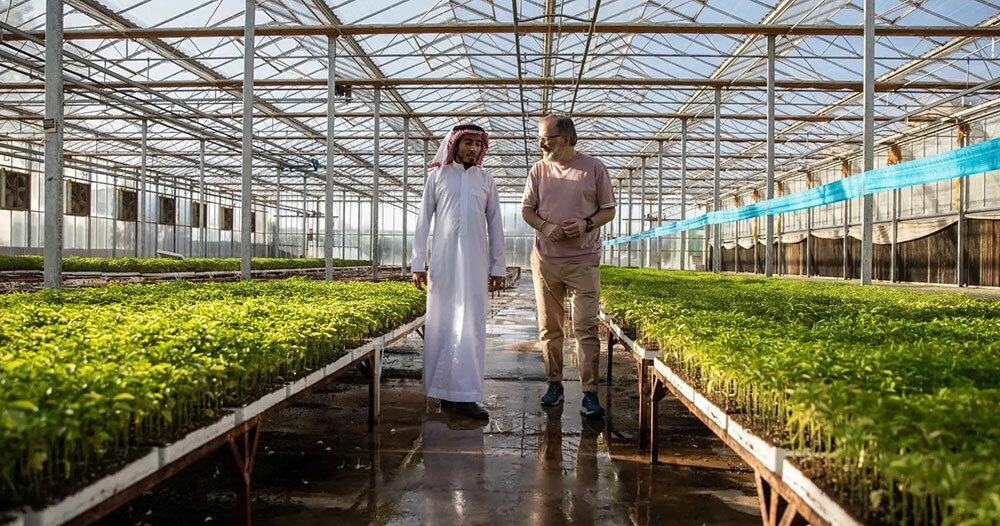Greenhouse Farming: Taking Full Advantage Of Crop Yields and Sustainability
With managed settings and lowered water usage, greenhouse farming provides the ideal option for year-round manufacturing of fresh produce. Discover the advantages of greenhouse farming and start enjoying the advantages today!
Benefits of Greenhouse Farming
Are you questioning what makes greenhouse farming so advantageous? One of the major benefits of greenhouse farming is the capability to regulate the setting in which plants are expanded.
One more advantage of greenhouse farming is the decrease in water use. By using water more effectively, greenhouse farming aids to save this precious source.
In addition, greenhouse farming permits for better pest and disease management. With the regulated setting, it is easier to protect against and regulate the spread of diseases and insects. This decreases the demand for unsafe pesticides, making greenhouse-grown crops safer and a lot more environmentally friendly.
Furthermore, greenhouse farming gives security against severe weather occasions. Crops expanded in greenhouses are secured from heavy rainfall, strong winds, and hailstorms, which can damage or damage exterior plants. Monarch Greenhouse construction Utah. This defense guarantees a more reputable and secure plant yield, also throughout unforeseeable weather problems

Making Best Use Of Crop Returns With Managed Environments
To make best use of crop returns in greenhouse farming, you can achieve optimal outcomes by managing the setting. By thoroughly taking care of factors such as temperature level, carbon, moisture, and light dioxide levels, you can develop the perfect conditions for your plants to thrive. One of the crucial advantages of greenhouse farming is the capability to control these environmental elements, allowing you to customize them to the particular needs of each plant. You can readjust the temperature level to promote faster development throughout the day and lower it slightly at evening to resemble all-natural fluctuations. You can regulate moisture degrees to protect against conditions and ensure appropriate transpiration. By supplying the correct amount and high quality of light, you can expand the growing period and boost returns. Furthermore, by controlling co2 degrees, you can enhance photosynthesis and motivate strenuous development. By implementing these regulated atmospheres, you can take full advantage of plant returns and accomplish regular, premium produce throughout the year.
Supporting Sustainability Through Greenhouse Farming
Make the most of sustainability in greenhouse farming by implementing effective resource management strategies. One crucial facet of advertising sustainability is the management of water usage. By carrying out systems such as drip watering and recirculation, you can significantly lower water wastage and make certain that every decrease counts. In addition, making use of biodegradable and organic products for insect control and fertilization can help minimize ecological impact. Integrated Bug Monitoring (IPM) techniques, as an example, involve making use of useful insects to control bugs, reducing the requirement for harmful chemicals. Furthermore, power intake can be minimized by Monarch Residential Greenhouse Utah utilizing renewable energy sources, such as photovoltaic panels, to power greenhouse operations. This not only decreases reliance on nonrenewable fuel sources yet also decreases greenhouse gas emissions. Correct waste administration is another critical element in advertising sustainability. Applying recycling and composting systems can reduce the quantity of waste sent out to landfills while likewise supplying nutrient-rich garden compost for plant development. Lastly, incorporating sustainable methods in greenhouse layout, such as using energy-efficient products and optimizing natural lighting, can additionally boost sustainability. By taking on these source monitoring methods, you can contribute to a much more lasting future in greenhouse farming.
Decreasing Water Usage in Greenhouse Farming
By implementing reliable water monitoring methods, you can substantially minimize water usage in greenhouse farming. Furthermore, surveillance and regulating the moisture levels inside the greenhouse can avoid unnecessary water loss. By adopting these water-saving methods, you can reduce water waste, preserve sources, and produce an extra sustainable future for greenhouse farming.
Year-Round Production of Fresh Create in Greenhouses
Greenhouses offer a controlled atmosphere that permits you to expand crops no matter of the exterior climate conditions. Greenhouses can be geared up with home heating and cooling down systems to maintain optimal temperatures for different plants. By applying these techniques, you can optimize the performance of your greenhouse and enjoy a stable supply of fresh create all year long.

Conclusion
In conclusion, greenhouse farming gives many advantages for making the most of crop returns and promoting sustainability. In addition, greenhouse farming allows for reduced water use, making it an environmentally pleasant option.
One of the significant benefits of greenhouse farming is the capacity to control the setting in which crops are grown.To make the most of plant returns in greenhouse farming, you can accomplish optimum results by regulating the environment. One of the vital advantages of greenhouse farming is the capacity to manage these environmental aspects, allowing you to customize them to the particular needs of each plant.By carrying out effective water administration techniques, you can considerably lower water use in greenhouse farming.In conclusion, greenhouse farming gives countless benefits for optimizing plant returns and promoting sustainability.